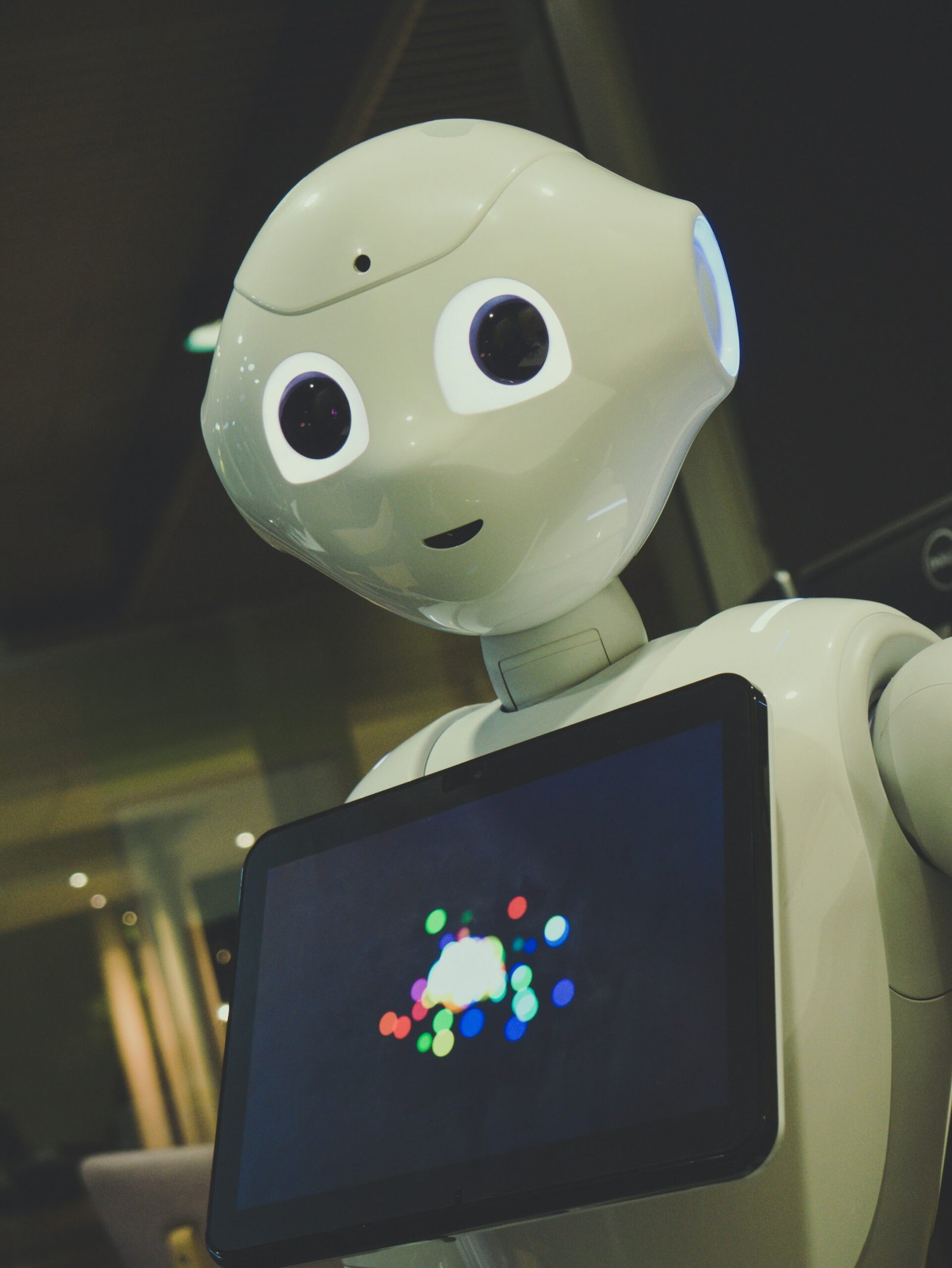The Rise of Conversational AI: How Voice Assistants Are Becoming Essential

Introduction to Conversational AI
Conversational AI refers to the technologies that enable human-like interactions between computers and people. Central to this field are systems designed to understand, process, and respond to human language in a natural way. Over the years, the development of conversational AI has been underpinned by advancements in natural language processing (NLP) and machine learning, which have collectively propelled this technology from rudimentary chatbots to highly sophisticated voice assistants.
The history of conversational AI can be traced back to the mid-20th century with early milestones like ELIZA, an early natural language processing computer program created by Joseph Weizenbaum. ELIZA was able to simulate conversation, marking one of the first steps towards human-computer communication. The field continued to evolve through the 80s and 90s, culminating in more advanced models like Apple’s Siri and Microsoft’s Cortana in the early 2010s.
Natural language processing is crucial in conversational AI as it allows the system to comprehend and generate human language. NLP involves several tasks, including speech recognition, language understanding, and dialogue management. Machine learning, notably deep learning, has also played a significant role by enabling these systems to continuously improve their accuracy and efficiency based on user interactions.
Early applications of conversational AI were basic, often limited to text-based interfaces on websites for customer support. However, with technological advancements, applications have expanded to include voice-activated systems like Amazon Alexa and Google Assistant, revolutionizing the way we interact with devices. These voice assistants are now capable of performing a wide array of tasks, from setting reminders to controlling smart home devices, illustrating the significant strides made in this domain.
As conversational AI continues to evolve, it promises to further integrate into daily life, offering more seamless and intuitive interactions between humans and machines. The journey from simple chatbots to complex voice assistants showcases the transformative potential of this technology.
The Evolution of Voice Assistants
The journey of voice assistants started in 2011 with the introduction of Apple’s Siri, marking a significant milestone in Artificial Intelligence (AI) and human-computer interaction. Siri’s voice recognition capabilities and seamless integration with iOS quickly captured user interest. Following this, in 2014, Amazon’s Alexa brought the voice assistant into the home via the Echo device, revolutionizing the concept of smart homes with its ability to control smart devices, provide information, and facilitate everyday tasks through simple voice commands.
Google Assistant launched in 2016, leveraging Google’s vast data ecosystem to offer a more personalized user experience. Its advanced natural language processing (NLP) capabilities enabled more accurate and context-aware responses, setting a new standard for voice assistants. Microsoft’s Cortana, though lesser-known, also contributed by integrating with Windows OS and focusing on productivity-enhancing features for professionals.
The evolution of voice assistants has been driven by significant advancements in AI, cloud computing, and data analytics. AI improvements have facilitated better NLP and machine learning algorithms, enabling voice assistants to understand and respond to an increasingly wide range of commands accurately. Cloud computing has provided the computational power necessary to process vast amounts of voice data quickly, enhancing real-time interactions with AI systems. Additionally, advanced data analytics have enabled voice assistants to learn from user interactions, ensuring continuous improvement in performance and relevance over time.
Today, voice assistants have become integral to many users’ daily routines, acting as virtual assistants that can manage schedules, control smart home devices, and even engage in casual conversation. This rapid progression from basic voice recognition to sophisticated, context-aware interactive systems highlights the transformative impact of conversational AI on technology and lifestyle, setting the stage for even more innovative developments in the future.
Core Technologies Behind Voice Assistants
Voice assistants have emerged as indispensable tools in today’s digital landscape, serving numerous functions from setting reminders to controlling smart home devices. The seamless performance of these assistants hinges on several core technologies, all working harmoniously. Key among these technologies are Natural Language Understanding (NLU), speech recognition, and text-to-speech systems.
Natural Language Understanding (NLU) is pivotal in decoding the semantics of user inputs. NLU enables voice assistants to comprehend the intent behind spoken words, even when faced with diverse phrasing or colloquial language. This technology leverages advanced machine learning algorithms to interpret contextual nuances and drive accurate responses. It acts as an interpreter between the human language and the computer’s understanding, converting spoken language into actionable data.
Speech recognition, another crucial component, involves the translation of spoken words into text. This process relies on sophisticated models trained on vast datasets containing varied accents, dialects, and languages. The system breaks down audio signals into discernible units, which are then meticulously analyzed to form coherent phrases and sentences. The efficiency of speech recognition determines how accurately the voice assistant captures and converts user utterances into text that can be further processed.
Equally important is the text-to-speech (TTS) system, tasked with converting textual information back into spoken language. This technology synthesizes human-like speech, enabling voice assistants to relay responses audibly. TTS systems employ deep learning models to produce natural intonations and modulations, maintaining a conversational tone. As a result, interactions with voice assistants feel more intuitive and engaging, enhancing user experience.
The interplay between NLU, speech recognition, and text-to-speech technologies creates a feedback loop, ensuring fluid communication between users and voice assistants. Each component meticulously processes information at different stages, culminating in a seamless, interactive experience. As these technologies continue to advance, voice assistants are poised to become even more integrated and essential in our daily routines.
Applications and Use Cases
Voice assistants have transcended from novelty gadgets to integral components of everyday life and business operations. Their versatility spans numerous applications, each significantly enhancing user experiences and operational efficiency. One prominent area where voice assistants shine is smart home devices. These AI-powered tools enable users to control lighting, thermostats, and security systems through simple voice commands, offering a seamless and hands-free approach to home automation. For instance, a user testimonial highlights the convenience of adjusting the room temperature or turning off lights without having to leave the comfort of their couch.
In the realm of customer service, virtual assistants play an indispensable role. Companies increasingly deploy voice assistants to handle routine inquiries, manage bookings, and provide 24/7 support. This not only improves customer satisfaction but also allows human agents to focus on more complex issues. A notable example is seen in the hospitality industry, where hotels use voice assistants to manage guest requests, significantly improving check-in processes and personalized services.
Healthcare is another sector witnessing innovative applications of voice technology. Voice assistants aid in managing schedules, offering medication reminders, and providing preliminary medical advice, thereby enhancing patient care and operational efficiency. A real-world example includes elderly patients using voice assistants to set reminders for their medications, ensuring adherence to treatment plans and reducing the risk of missed doses.
Hands-free navigation has also been revolutionized by conversational AI. Whether driving or engaging in other activities, users benefit from voice-activated maps and directions, ensuring safety and convenience. For instance, delivery drivers often use voice assistants to receive real-time traffic updates and route optimizations, which enhance efficiency and reduce the chances of delays.
These real-world scenarios and user testimonials underscore the myriad benefits of voice assistants, making them indispensable tools in both personal and professional contexts.
The Impact on Daily Life and Productivity
Voice assistants, like Alexa, Google Assistant, and Siri, have profoundly reshaped daily routines and productivity levels, becoming indispensable tools in modern life. The transformative effect of voice assistants is primarily driven by their ability to simplify and streamline everyday tasks through hands-free interaction. Whether setting reminders, sending messages, or controlling smart home devices, voice commands facilitate a seamless user experience that enhances convenience and efficiency.
One of the key advantages of voice assistants is their capacity to support multitasking. Users can execute multiple activities simultaneously without physically engaging with their devices. For instance, cooking in the kitchen while asking a voice assistant for recipe steps or managing appointments during a workout exemplifies how these technologies foster efficient task management.
Additionally, voice assistants have significantly lowered the learning curve for technology use among individuals of varied technical proficiency. Unlike traditional interfaces that require navigating through complex menus and settings, voice commands rely on natural language processing. This intuitive interaction model makes it easier for users, including those less tech-savvy, to integrate technology into their daily lives.
A further contributor to productivity enhancement is the automation and routine-setting capabilities of voice assistants. By creating customized routines and automating repetitive tasks, users can save valuable time and focus on more critical activities. For instance, a morning routine encompassing weather updates, news briefings, and calendar checks can lead to a highly efficient start to the day.
Moreover, businesses are increasingly leveraging voice assistants to improve workplace productivity. From scheduling meetings and managing to-do lists to retrieving information without disrupting workflow, voice-activated systems streamline business operations. By doing so, they contribute to an environment where efficiency and productivity are prioritized, thus benefiting both individual users and organizations alike.
Privacy and Ethical Considerations
As voice assistants become increasingly integrated into our daily lives, significant privacy and ethical concerns arise. These devices consistently collect audio data to offer responsive and bespoke services, leading to heightened fears related to data collection, user consent, and data security. The potential for sensitive information being captured inadvertently or misused raises substantial ethical questions about the appropriateness and transparency of these practices.
One of the primary challenges is consent. Users may be unaware of the extent of data collection and how their conversations are stored and utilized. Often, terms of service and privacy policies are complex and difficult to understand, making it challenging for consumers to provide informed consent. This lack of transparency has led to growing calls for clearer and more accessible communication from companies regarding data usage practices.
In terms of data security, there is an ongoing risk of unauthorized access and breaches. Personal data, if poorly secured, can be vulnerable to hackers, posing risks to individuals’ privacy and safety. Companies are increasingly adopting robust security measures, including encryption and regular security audits, to enhance the protection of data. However, despite these efforts, the evolving nature of cyber threats necessitates continuous improvements in defenses.
To mitigate these privacy and ethical issues, various regulatory frameworks and guidelines have been established. Legislation like the General Data Protection Regulation (GDPR) in the European Union has set significant precedents in mandating stricter controls on data collection and enhancing user rights. Additionally, companies are beginning to allow users greater control over their data, offering options to review, delete, or limit data storage and processing.
Users can also take proactive steps to protect their privacy. Regularly reviewing privacy settings on voice assistant devices, disabling features that collect unnecessary data, and being judicious about the types of information shared can help reduce potential privacy risks. It is essential for both companies and consumers to adopt a collaborative approach to ensuring that voice assistants are used responsibly, thereby fostering an environment of trust and safety.
Future Trends and Innovations
As we look toward the future, the evolution of conversational AI and voice assistants promises to be transformative. One of the key trends in this realm is the enhancement in contextual understanding. Voice assistants are expected to become more adept at discerning the nuances of human language, enabling them to comprehend and respond to more complex queries and commands effectively.
Another significant advancement on the horizon is the development of emotional intelligence within voice assistants. Future iterations will likely possess the capability to detect emotional cues in our speech, allowing them to respond in a more empathetic and personalized manner. This leap in emotional intelligence could revolutionize the way we interact with technology, making it more engaging and human-like.
The integration of multi-modal interaction is also set to redefine the landscape of voice assistants. Combining verbal, visual, and tactile inputs, multi-modal capabilities will enable users to interact with devices in a more seamless and intuitive manner. For instance, visual feedback coupled with voice commands can enhance the user experience, making interactions more dynamic and versatile.
Moreover, the potential for integration with other emerging technologies, such as augmented reality (AR) and the Internet of Things (IoT), adds another layer of excitement. Voice assistants could soon become integral components of AR environments, providing real-time assistance and information overlay in various contexts, from navigation to shopping. Furthermore, in an IoT-connected world, voice assistants will not only control but also sync various smart devices, offering a cohesive and interconnected user experience.
The convergence of these advancements signals a future where conversational AI and voice assistants play an indispensable role in our daily lives. By bridging the gap between human cognition and digital interaction, these innovations are set to transform not only how we interact with technology but also how we live and work.
Conclusion: Embracing the Future with Voice Assistants
As we reflect on the significant strides made in conversational AI, it is evident that voice assistants have become indispensable in our daily lives. From managing household tasks to enhancing accessibility, these intelligent tools have revolutionized the way we interact with technology. With their capacity to understand and respond to natural language, voice assistants such as Siri, Alexa, and Google Assistant have transformed not just personal living spaces, but also professional environments.
The journey of integrating voice assistants into our routines has demonstrated not only convenience but also substantial advancements in artificial intelligence. The seamless interaction and improved accuracy in voice recognition are testaments to the evolution of AI technologies. Such enhancements make tasks like setting reminders, managing schedules, or even controlling smart home appliances remarkably efficient and user-friendly.
However, it is crucial to approach these technological advancements with a balanced perspective. While the benefits of embracing voice assistants are vast, including their potential to personalize user experiences and facilitate an intuitive connection with digital interfaces, there are challenges that warrant attention. Privacy concerns and data security remain paramount as we navigate an increasingly interconnected world. Ensuring robust safeguards and transparent data practices will be fundamental in fostering trust and widespread adoption of these technologies.
Looking ahead, the potential of conversational AI to further innovate and transform technological interactions is boundless. Voice assistants are poised to become even more sophisticated, seamlessly integrating with emerging technologies and offering deeper, more contextual interactions. As they progress, these tools will likely bring forth new applications and transformative possibilities, fundamentally reshaping our engagement with digital ecosystems.
In embracing these advancements, individuals, businesses, and developers alike have the opportunity to harness the full potential of voice assistants, driving forward a future where technology intuitively understands and responds to our needs. By remaining mindful of the challenges and committed to continuous improvement, we can ensure that voice assistants not only augment our daily lives but also pave the way for a more connected and responsive technological landscape.




